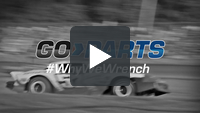The engine splash shield is a crucial component of the Volkswagen Golf, providing protection for the engine and undercarriage. Also known as an engine undertray, skid plate, or belly pan, this shield guards against road debris, water, and other elements that could damage vital parts of the vehicle.
The primary function of the engine splash shield is to shield the engine compartment from contaminants such as dirt, rocks, and moisture. By preventing these elements from reaching sensitive components, the shield helps maintain optimal engine performance and extends the lifespan of various parts. Additionally, it contributes to the aerodynamic design of the Volkswagen Golf, which can improve fuel efficiency and reduce wind noise.
Over time, the engine splash shield may experience wear and tear due to exposure to harsh road conditions. Common issues include cracks, breaks, or sagging of the shield. Signs that the splash shield may need replacement include unusual noises coming from beneath the vehicle, the shield dragging on the ground, or visible damage upon inspection. A compromised shield can lead to increased exposure of the engine to harmful elements, potentially resulting in more significant mechanical problems.
Regular inspection of the engine splash shield is recommended to ensure it remains in good condition. When replacing the shield, it's important to select one that is compatible with the specific model year of your Volkswagen Golf. Installation typically involves lifting the vehicle safely, removing the old shield by unscrewing or unclipping it from the undercarriage, and attaching the new one securely. It's advisable to use the proper tools and follow manufacturer guidelines or consult a professional mechanic to ensure correct installation.
Q: Is it safe to drive without an engine splash shield?
A: While driving without an engine splash shield is possible, it is not advisable. The shield protects essential components from damage caused by road debris and moisture, which can prevent costly repairs in the long run.
Q: How do I know if my engine splash shield needs to be replaced?
A: Signs that the splash shield may need replacement include visible cracks or breaks, the shield hanging lower than normal, unusual noises coming from the undercarriage, or if it's dragging on the road.
Q: Can I replace the engine splash shield myself?
A: If you have mechanical experience and the proper tools, you may replace the splash shield yourself. However, if you're unsure, it's best to consult a professional mechanic to ensure it's installed correctly.
Q: What are other names for the engine splash shield?
A: The engine splash shield is also commonly referred to as an engine undertray, skid plate, or belly pan.
A: While driving without an engine splash shield is possible, it is not advisable. The shield protects essential components from damage caused by road debris and moisture, which can prevent costly repairs in the long run.
Q: How do I know if my engine splash shield needs to be replaced?
A: Signs that the splash shield may need replacement include visible cracks or breaks, the shield hanging lower than normal, unusual noises coming from the undercarriage, or if it's dragging on the road.
Q: Can I replace the engine splash shield myself?
A: If you have mechanical experience and the proper tools, you may replace the splash shield yourself. However, if you're unsure, it's best to consult a professional mechanic to ensure it's installed correctly.
Q: What are other names for the engine splash shield?
A: The engine splash shield is also commonly referred to as an engine undertray, skid plate, or belly pan.

























